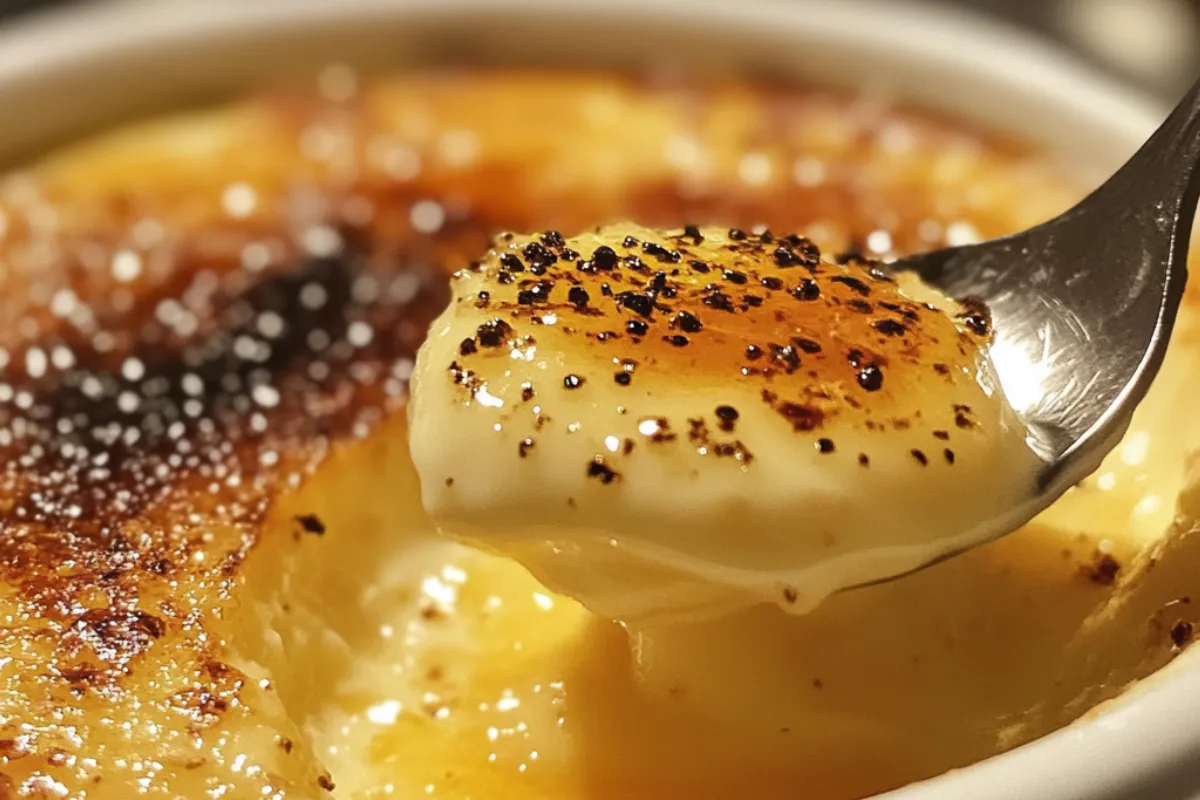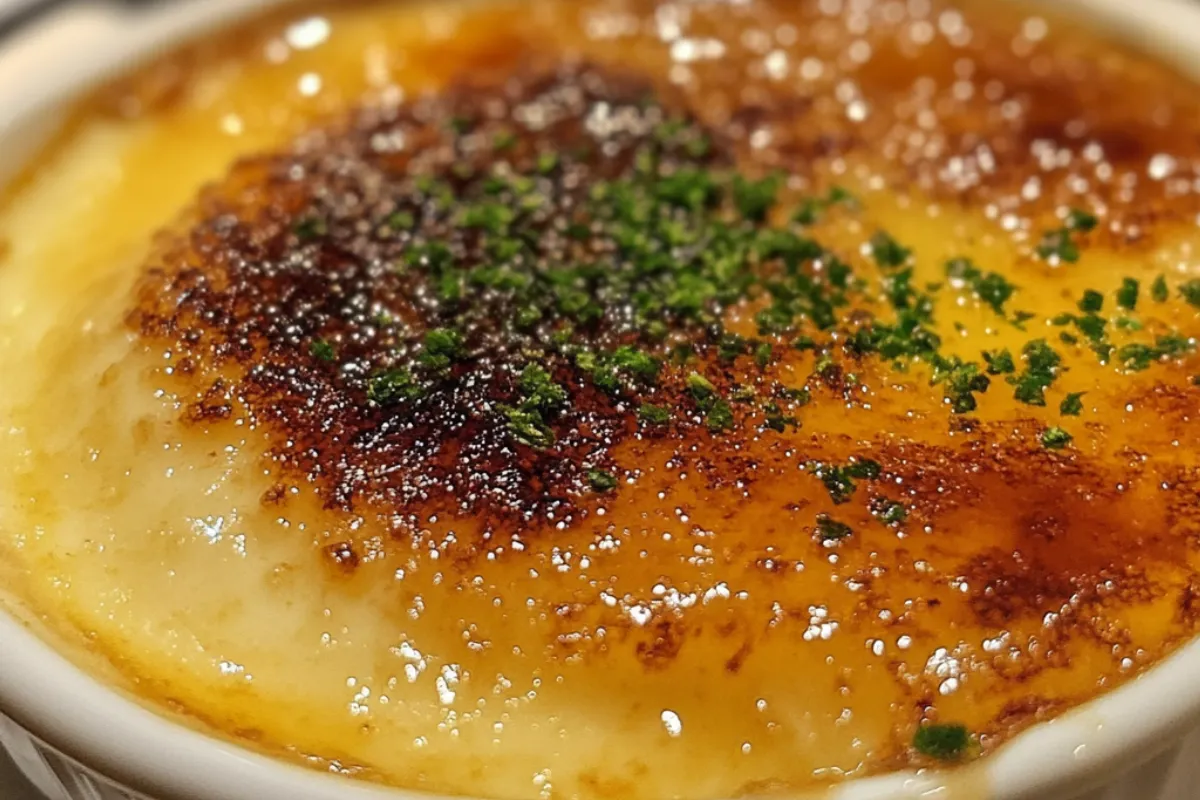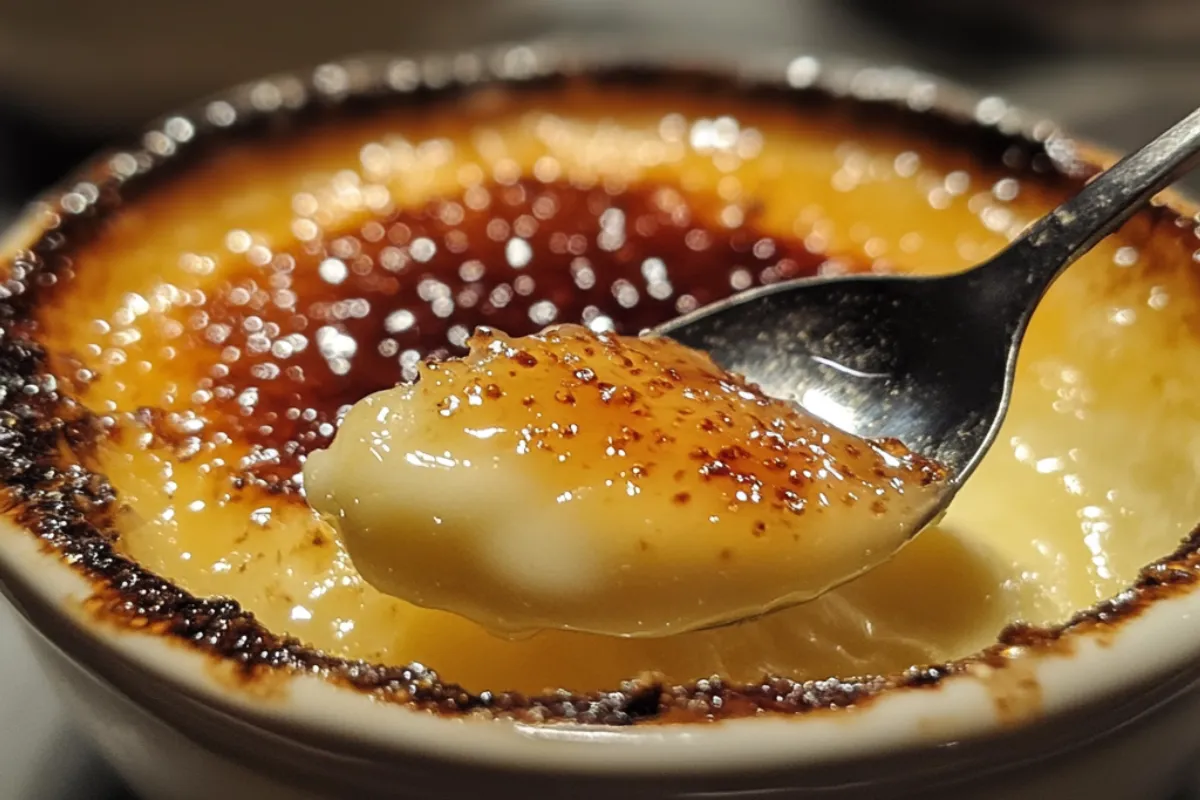Crème brûlée is a luxurious dessert that impresses with its smooth, creamy custard and crisp caramelized sugar topping. Traditionally, a blowtorch is used to achieve the perfect caramelization. However, not everyone has this tool in their kitchen. If you’re looking for alternative methods and wondering how to caramelise crème brûlée without a blowtorch, you’re in the right place! This guide will walk you through multiple techniques that will allow you to achieve a professional finish using everyday kitchen items.

Why Caramelizing Crème Brûlée Without a Blowtorch Is Essential
The crispy, caramelized sugar topping on crème brûlée provides a beautiful contrast to the velvety custard below. This texture interplay is a big part of why this dessert is so popular. Using a blowtorch is the most common method to create that perfect topping, but don’t worry, we’ve got other solutions if you want to learn how to caramelise crème brûlée without a blowtorch. For more detailed instructions on perfecting your caramelization technique, you can also check out this guide on using a broiler.
Want to learn more about similar caramelized desserts? Check out Crab Brûlée Recipe – A Gourmet Delight for a delicious twist on a classic.
The Science Behind Caramelizing Crème Brûlée
Caramelization is a process that occurs when sugar is heated to high temperatures, causing it to melt, brown, and ultimately form a complex array of flavors. When it comes to crème brûlée, this process adds not only a beautiful golden crust but also deep, rich flavors. If you’re trying to master how to caramelise crème brûlée without a blowtorch, understanding this process is crucial.
Alternative Methods to Caramelise Crème Brûlée Without a Blowtorch
Here are some methods that show you exactly how to caramelise crème brûlée without a blowtorch:
1. Using the Oven’s Broiler for Caramelizing Crème Brûlée
One of the easiest ways to caramelize the sugar on top of your crème brûlée without a blowtorch is by using your oven’s broiler.
Here’s how:
- Preheat your broiler on high.
- After chilling your crème brûlée, sprinkle a thin layer of sugar evenly over the custard.
- Place the ramekins on a baking sheet and position them under the broiler.
- Watch closely! The sugar will begin to caramelize within 1-2 minutes. Be sure to rotate the ramekins for an even caramelization.
- Remove the ramekins and allow the caramel to cool and harden.
If you want to perfect this method, here’s a great guide on How to Caramelize Brûlée: A Step-by-Step Guide.
2. How to Use a Hot Spoon to Caramelize Crème Brûlée
Another option is to use a hot spoon to caramelize the sugar. This method works well if you don’t have a blowtorch or broiler available.
- Heat a metal spoon over an open flame until it becomes red-hot.
- While the spoon heats, sprinkle an even layer of sugar over your custard.
- Carefully press the hot spoon onto the sugar. Move it in circular motions for even caramelization.
- Repeat until the entire sugar layer has been caramelized and formed a hard crust.
This technique takes patience but can yield fantastic results without the need for special equipment.
3. Caramelizing Crème Brûlée with a Searing Iron
A searing iron, or branding iron, usually used for steaks, can also be adapted for caramelizing crème brûlée.
- Heat the searing iron on the stove until it is extremely hot.
- Once your custard is chilled, sprinkle sugar evenly on top.
- Carefully press the hot iron on the sugar to melt and caramelize it.
- Let the sugar harden before serving.
This method requires careful handling but can create a beautifully even caramelization.
4. Caramelizing Crème Brûlée with a Hot Skillet
This is another unconventional method to caramelize sugar without a blowtorch.
- Heat a skillet over medium-high heat.
- Place ramekins with crème brûlée on the skillet and let them sit for a few minutes.
- As the skillet heats, the sugar will begin to melt and caramelize.
- Remove from the heat when the sugar is golden brown and let it cool.
5. Using a Preheated Cast-Iron Pan to Caramelize Crème Brûlée
If you have a cast-iron pan, you can preheat it in the oven and use it to caramelize the sugar:
- Preheat the cast-iron pan in an oven at 450°F (230°C).
- Once hot, remove the pan carefully.
- Sprinkle sugar evenly on your crème brûlée.
- Briefly place the ramekins on the hot cast iron for a few seconds until the sugar starts to melt.
- Rotate for even caramelization, then let the sugar harden.
This method leverages the heat retention of cast iron to get that perfectly caramelized top.

Why Some Methods Work Better Than Others for Caramelizing Crème Brûlée
Each method of caramelizing crème brûlée has its own benefits and potential pitfalls. The broiler method, for example, is quick and easy, but requires careful attention to avoid burning. The hot spoon method, while effective, requires patience and a steady hand. On the other hand, using a searing iron offers excellent control, ensuring that each part of the sugar is evenly caramelized.
For those looking for greater precision, consider combining methods. For instance, you could start with the broiler and finish with the hot spoon or a searing iron for extra control in difficult spots.
Pro Tip: Achieving the Perfect Crunch When Caramelizing Crème Brûlée
For the ultimate texture, consider adding a thin layer of sugar, chilling the dessert again, and then caramelizing a second layer.
Another trick? Add a pinch of salt to the sugar before caramelizing. This enhances the flavors and provides a subtle contrast to the sweetness of the custard.
For those experimenting with different sugars, mix a bit of demerara sugar with granulated sugar. This adds a bit more depth to the flavor while maintaining a crispy crust.
Choosing the Right Sugar for Caramelizing Crème Brûlée Without a Blowtorch
Choosing the correct type of sugar is crucial for perfect caramelization.
- Granulated sugar: This is the most commonly used sugar for crème brûlée because it melts evenly and forms a crisp layer.
- Caster sugar: A finer sugar that melts faster and creates a smoother crust.
- Brown sugar: While this can be used, it has a tendency to burn quickly, so it’s best avoided for crème brûlée.
Curious about the differences between sugar types and how they impact desserts like crème brûlée? Dive into What Sugar for Brûlée? for all the details.
Can I Make Crème Brûlée Ahead of Time?
Yes, crème brûlée is actually a great dessert to prepare ahead of time. You can make the custard and refrigerate it for up to 2 days. When you’re ready to serve, just caramelize the sugar using your preferred method. This makes crème brûlée a perfect dessert for dinner parties, allowing you to focus on the main course while knowing dessert is already taken care of.
Just remember: don’t caramelize the sugar too far in advance, as the crunchy topping will soften if it sits in the refrigerator for too long.
Frequently Asked Questions on How to Caramelise Crème Brûlée Without a Blowtorch
Can I use a lighter to caramelize crème brûlée?
While technically possible, using a lighter is not recommended.
Is it safe to use a broiler for caramelizing sugar?
Yes! A broiler can be a safe alternative to a blowtorch.
How do I prevent burning the sugar?
The key to preventing burnt sugar is even sugar distribution and close monitoring during the caramelization process.
Can I use brown sugar?
Brown sugar contains molasses, which makes it burn faster than white sugar. It is not ideal for creating the crisp, thin layer you want for crème brûlée.
Creative Twists on Traditional Crème Brûlée
While the classic vanilla-flavored crème brûlée is always a hit, you can experiment with different flavors for a unique twist:
- Chocolate Crème Brûlée: Add melted dark chocolate to the custard mixture for a rich and decadent version.
- Coffee Crème Brûlée: Stir in some espresso powder to create a coffee-flavored custard.
- Citrus Crème Brûlée: Infuse the custard with orange or lemon zest for a bright and zesty flavor.
- Lavender Crème Brûlée: Add culinary lavender for a floral and fragrant dessert, perfect for springtime.
By using the alternative caramelization methods discussed, you can apply these techniques to any flavor of crème brûlée you choose to make.

Conclusion: Mastering How to Caramelise Crème Brûlée Without a Blowtorch
Caramelizing crème brûlée without a blowtorch is not only possible but can also yield exceptional results. Whether you’re using your oven’s broiler, a hot spoon, or a searing iron, these methods offer simple yet effective alternatives to the traditional blowtorch technique.
For more creative dessert recipes, including variations of crème brûlée, check out this Difference Between Flan, Crème Brûlée, and Panna Cotta to expand your dessert repertoire.

